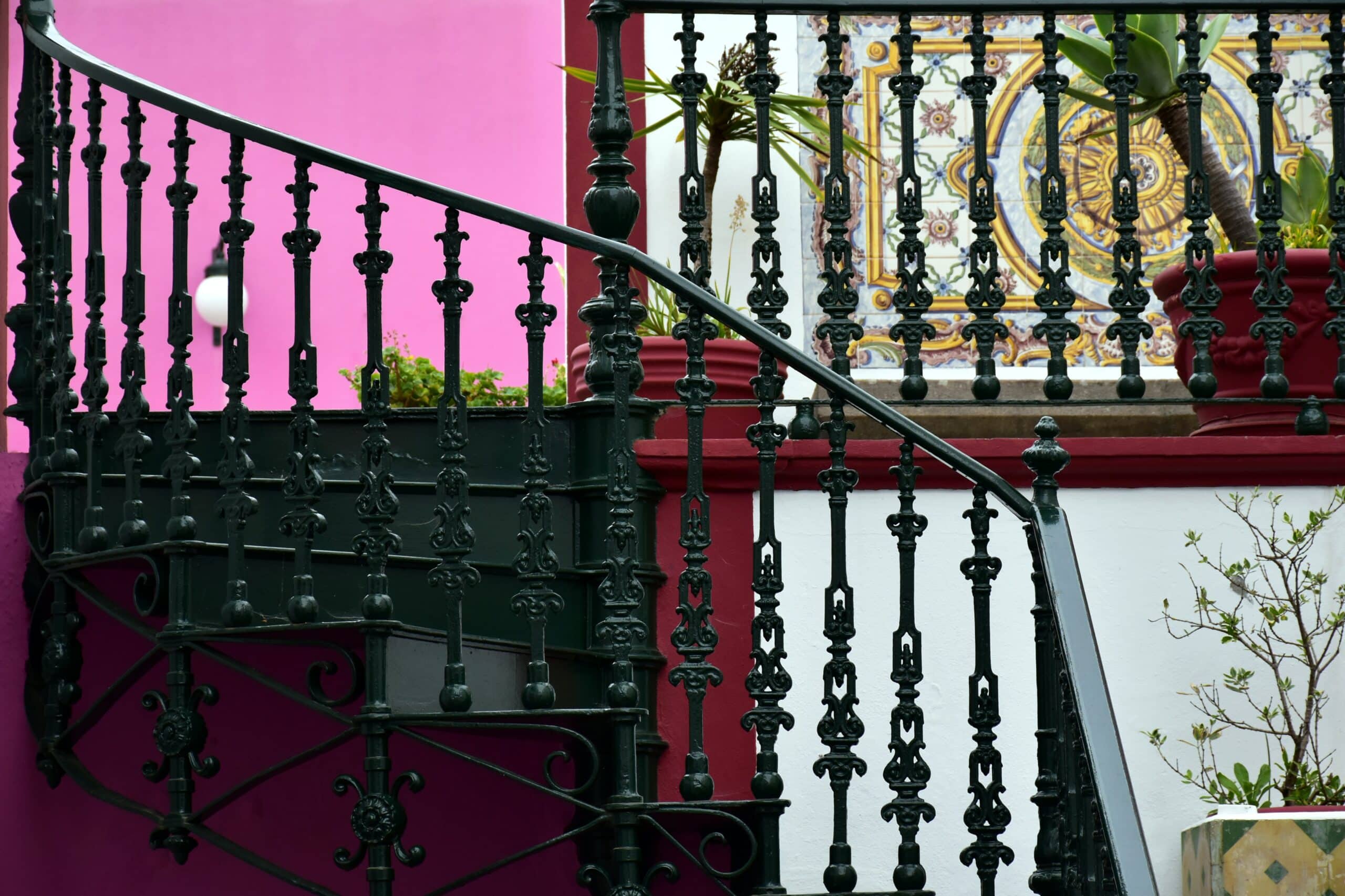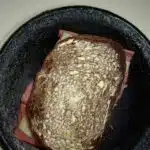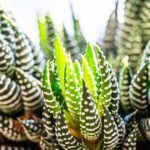Do you ever feel like you don’t have the time or energy to take care of a plant? With the Cast-Iron Plant, you don’t have to worry. This resilient houseplant is one of the toughest plants out there and requires minimal care. Whether you are a beginner or an experienced gardener, this guide provides all the tips and tricks to help you grow a Cast-Iron Plant with ease.
This article serves as your ultimate guide to growing and caring for a Cast-Iron Plant. The Cast-Iron Plant is known for its hardiness and low maintenance requirements and is popular among gardeners of all levels. From light requirements to watering schedules, this guide has all of the information needed in order to keep your Cast-Iron Plant healthy and thriving!
The Cast-Iron Plant is a great addition for any home or office thanks to its air purifying properties, stylish foliage, and easy care needs. With just a few simple steps and tips from this guide, you can be on your way to enjoying your own Cast-Iron Plant in no time!
Overview Of The Cast-Iron Plant
The Cast-Iron Plant is often compared to life itself, as it’s so resilient and strong. It’s a low-maintenance plant that can live in less than ideal conditions, while still providing beauty and enjoyment. It’s an ideal plant for those with busy lives who don’t have the time to care for more temperamental plants.
The Cast Iron Plant has a unique look and texture, which makes it desirable for many kinds of indoor spaces. Its attractive foliage is deep green, glossy, and grows up to three feet in height depending on the variety. It does best in partial shade, but it can also tolerate direct sun if kept moist enough. The soil should be kept moist at all times, but not soggy or wet.
The Cast-Iron Plant is an easy plant to care for and adds a touch of luxury to any home or office environment. With its hardy nature and attractive foliage, this little gem will bring years of joy with minimal effort on your part!
Identifying The Cast-Iron Plant
Ironically, the cast-iron plant is anything but indestructible! This unassuming houseplant has a few nuances that make it tricky to identify.
To start, here’s a quick list of 3 telltale signs of the cast-iron plant:
- Its leaves are oval with pointy tips and are usually dark green with stripes.
- Its stalks can reach up to 2 feet in height, making them quite noticeable.
- The cast-iron plant often blooms white flowers during the spring and summer months.
Identification isn’t the only key to success when caring for your cast-iron plant – selecting the right growing location is also essential. To make sure your cast iron plant thrives, you’ll need to choose a spot that offers plenty of indirect sunlight and well-draining soil.
Selecting The Right Growing Location
Choosing the right growing location for your cast-iron plant is no small task. It’s important to keep in mind that each individual plant has its own unique needs, so it’s best to research the specifics of the type you have before you begin.
When selecting a spot for your cast-iron plant, it’s important to consider two things: light and humidity. Cast-iron plants do best when they’re placed in bright, indirect light – too much direct sunlight can burn the leaves! You’ll also want to pay attention to humidity levels – although they’re hardy plants and don’t require particularly high levels of moisture, they do appreciate some extra humidity every now and then.
When it comes to placement, it’s worth noting that cast-iron plants are relatively slow growers, so they don’t need much room to spread out. That makes them perfect for tight spaces or areas where other plants might struggle – like window sills or those awkward corners in your home that nothing else seems to fit in!
With these tips in mind, you’ll be well on your way towards finding the perfect home for your cast-iron plant. Next up: soil requirements!
Soil Requirements For The Cast-Iron Plant
Coincidentally, with the right soil for your cast-iron plant, you can have an easy time growing this attractive and low-maintenance houseplant. The soil requirements for the cast-iron plant are not difficult to meet.
When it comes to soil needs, the cast-iron plant prefers a well-draining potting mix that is slightly acidic and high in organic matter. To ensure proper drainage, add some perlite or other coarse material to the potting mix. It’s also important to make sure your potting mix is moist but never soggy or waterlogged.
You can also amend the existing soil with peat moss for added acidity. This will help to maintain an ideal pH level of between 5.5 and 6 for healthy growth of your cast-iron plant. When it comes to feeding, use a balanced liquid fertilizer diluted with water every month during spring and summer months when the plant is actively growing.
From there, you’ll be ready to move onto planting your cast-iron plant and watching it thrive in its new home!
Planting The Cast-Iron Plant
Ah, the cast-iron plant! It’s the perfect addition to any garden: indestructible and surprisingly resilient – no matter what you throw at it. That said, planting this tough-as-nails houseplant isn’t as simple as just plonking it in the ground. No, for a successful cast-iron plant garden, there are some key steps that should be taken.
The fifth step in ensuring your cast-iron plant is happy and healthy is properly planting it. To begin, choose a pot with drainage holes and fill it with a well-draining soil mix that contains equal parts of peat moss and sand or perlite. When you’re ready to plant the cast-iron plant, dig a hole that is twice as wide and just as deep as the root ball of your houseplant. Place your cast-iron plant in the hole, backfill with soil around its base, then gently firm down and water thoroughly until moist.
It’s important to note that proper spacing of your plants is essential for air circulation; if planted too close together they can become prone to fungal problems due to poor air circulation. So make sure your plants have enough space between them when they are planted in order to ensure their long term health! With these tips in mind, you can now move on to the next step: watering your cast-iron plant...
Watering The Cast-Iron Plant
Did you know the cast-iron plant can survive on a single watering for up to four months? This statistic alone is a testament to how resilient this houseplant is. It’s an ideal choice for novice gardeners who can’t commit to daily watering, or those living in dry climates.
When it comes to caring for your cast-iron plant, proper watering is essential. To keep your plant healthy and growing, it’s important to not only pay attention to when you water it, but also how much you give it. Generally speaking, you should water the soil until it feels evenly moist—not soggy—about once or twice a week during the warmer months and every one to two weeks during colder months. Make sure that any excess water drains away quickly so that the roots don’t become waterlogged.
In addition, always check the soil before you decide whether your cast-iron plant needs watered. If the top inch of soil feels dry then go ahead and give it some more water. If there’s still moisture present then wait until next time as overwatering can cause root rot which can be difficult to cure as this plant is very sensitive to wet conditions. With proper care and attention, your cast-iron plant will thrive and bring plenty of greenery into your home.
Now that we’ve discussed how best to water your cast-iron plant, let’s take a look at its light requirements…
Light Requirements For The Cast-Iron Plant
Like a beacon of hope in the darkness, light requirements are essential for the cast-iron plant. In this final step of care and growing, we’ll explore what it takes to keep this sturdy houseplant happy and healthy.
Light is the lifeblood of any plant, and cast-iron plants are no exception. To thrive in its environment, your plant will need some basic light requirements. Here’s how to make sure your cast-iron plant gets enough:
• Natural Light: Place your plant in an area with indirect natural light from a nearby window or skylight. Make sure to rotate your pot occasionally so all sides get sufficient sun exposure throughout the day.
• Artificial Light: If you don’t have access to natural light, you can use artificial lights such as fluorescent bulbs or LED grow lights to supplement your plant’s needs. Try to place the bulb about 12 inches away from the pot so that it doesn’t get too hot for your beloved greenery.
• Shade: Too much direct sunlight can be detrimental to a cast-iron plant’s health, so make sure there is a good balance between shade and sun exposure at all times. If you’re placing it outside, try putting it on a shaded patio or balcony during sunny days or under an umbrella or other protective covering.
Whether you’re using natural light or artificial lighting, ensure that you provide plenty of brightness for your cast-iron plant to flourish! With these tips in mind, you’ll have no trouble keeping your new houseplant happy and healthy for years to come. Now let’s move onto fertilizing – another key part of caring for a cast-iron plant!
Fertilizing The Cast-Iron Plant
Have you ever wondered if fertilizing a cast-iron plant is important? It turns out that it is, and not just for the health of your plant. If you’re looking to promote lush, green foliage and help your cast-iron plant grow and thrive, then fertilizing is key. Let’s explore the basics of fertilizing this beautiful houseplant.
Fertilizing your cast-iron plant is an essential part of its care routine. Just like many other plants, the cast-iron plant needs certain nutrients to stay healthy and strong. Fertilizer helps provide these nutrients and can be applied once every two to three months during the growing season (spring through summer). Be sure to use a balanced fertilizer that’s specifically designed for plants like the cast-iron plant.
When applying fertilizer, always follow package instructions as they may vary depending on the product you’re using. Make sure to dilute it with water first so that it’s not too concentrated as over-fertilizing can do more harm than good. Water your cast-iron plant thoroughly before and after applying fertilizer in order to ensure that it absorbs all of the nutrients properly.
By following these tips, you can be confident that your cast-iron plant has everything it needs to stay healthy and happy. Taking proper care of your cast iron plant will ensure long term success—up next we’ll look at how pruning can help keep this houseplant looking its best!
Pruning The Cast-Iron Plant
Pruning a cast-iron plant is like trimming the hair of a loved one. It’s an important part of caring for it, and it should be done with care and respect. You don’t want to give your beloved plant an unflattering haircut! Pruning requires patience as well as a gentle touch. Taking the time to do this correctly will ensure that your cast-iron plant looks its best.
Before pruning, make sure you have the right tools: sharp scissors or garden shears are best for pruning this type of plant. Be sure to clean them thoroughly with rubbing alcohol before you begin, so that you don’t spread any disease from one plant to another. Start by carefully removing any dead or damaged leaves and stems, then follow up with light trimming of healthy foliage to encourage new growth. This will also help your plant stay compact and bushy.
When pruning, it’s important to remember that less is more! Don’t take too much off at once – always start small and work your way up gradually if necessary. Removing too much can cause shock or even kill the plant, so be sure to proceed slowly and cautiously while keeping an eye out for signs of stress in your cast-iron plant. With proper pruning techniques, you’ll soon enjoy lush foliage and abundant blooms!
Propagating The Cast-Iron Plant
Time for a bit of horticultural magic! Propagating the cast-iron plant is not just simple, it’s downright magical. This stalwart houseplant can be propagated through division or by taking stem cuttings. It’s a great way to give your friends and family a piece of the green goodness.
Division is an easy propagation method that involves splitting an existing plant into two or more plants. This is best done during repotting, when you can carefully separate the root ball and replant them in individual pots. It’s like watching a magician pulling a rabbit out of their hat!
Stem cuttings are also relatively simple, involving snipping off four- to six-inch pieces from the top of the plant with pruning shears and planting them in soil. Before sticking them in soil, make sure to dip the cutting in rooting hormone powder to help stimulate root growth.
Propagating your cast-iron plant can be an incredibly rewarding experience, but be mindful of potential problems that might arise if you don’t follow proper care instructions. Always keep an eye on your plants – they’ll thank you for it!
Potential Problems With Cast-Iron Plants
Ah, the cast-iron plant: a resilient and hardy perennial that’s almost indestructible and can take anything you throw at it – except maybe the occasional pests or disease. Unfortunately, even this tough plant isn’t immune to some of the same problems other plants face. Let’s take a look at what potential issues could arise with cast-iron plants, and how to address them.
First up is climate conditions. These plants are native to subtropical and tropical regions, which means they don’t like cold weather. If your climate is too cold for the cast-iron plant, you’ll need to move it indoors during winter months – or risk root rot from excessive moisture caused by cold temperatures.
Second on our list is soil nutrient deficiencies. Cast-iron plants don’t require a lot of nutrients, but they do need them in order to thrive; if they’re not getting enough nitrogen or potassium, their leaves may start wilting or yellowing. To combat this, make sure you use a balanced fertilizer every few weeks throughout the growing season. Additionally, test your soil regularly to make sure your cast-iron plant can access all the nutrients it needs – especially if you’re growing it in containers!
Finally, improper watering is another common problem associated with these beloved houseplants. They like consistently moist soil but don’t tolerate soggy conditions; too much water can cause root rot or other fungal diseases that can quickly kill off your plant. Be sure to let the top inch of soil dry out before watering again – and adjust your watering habits according to seasonal changes or any other environmental factors that affect moisture levels in the air or ground around your cast-iron plant. With these tips in mind, you should be able to keep your cast-iron plant healthy and happy!
Controlling Insects And Diseases On Cast-Iron Plants
Ironically, the cast-iron plant – whose name implies a hardiness that makes it immune to pests and diseases – isn’t exempt from their effects. Controlling insects and diseases on these plants is essential for them to thrive, so here we’ll cover some of the most common problems and how to deal with them.
The most common insect pests associated with cast-iron plants are aphids, mealybugs, scales and spider mites. These can be controlled by spraying the leaves with a regular insecticidal soap solution or neem oil spray. It’s important to keep an eye out for any signs of infestation and apply preventative measures when necessary.
Diseases such as root rot, powdery mildew and leaf spot can also plague cast-iron plants if they’re not properly cared for. To avoid these issues, make sure you’re watering your plant correctly by giving it a thorough soak but then allowing the soil to dry out completely between waterings. You should also make sure your plant is getting enough air circulation by spacing it away from other plants in the garden or using a fan to circulate air around it indoors.
To ensure your cast-iron plant is healthy and thriving, consider following these tips for growing it successfully.
Tips For Growing Cast-Iron Plants
Growing cast-iron plants is a relatively simple task, and the rewards are plenty. With the right care and attention, your cast-iron plant will thrive and provide you with lush foliage for many years to come. Here are some tips for getting the most out of your cast-iron plant.
First and foremost, choose a location with bright but indirect light. If you can manage it, try to position your plants in an area that gets morning sunlight and afternoon shade. This will help prevent any leaf damage from too much sun exposure. Also be sure to keep your plant in a temperature range between 50°F (10°C) and 75°F (24°C).
When it comes to watering, make sure the soil is always moist but not soggy. Cast-iron plants are quite drought tolerant so if you forget to water them every once in awhile they should be fine. However, if you want to encourage healthy growth it’s best to stick to a consistent watering schedule. Finally, fertilize your plant every two weeks during its growing season in spring and summer using a balanced fertilizer blend.
Your cast-iron plant is now ready for its place of honor in your home or garden! With proper care and regular maintenance, you can enjoy lush foliage for years to come – so why not give it a try? Now let’s look at some other uses for these hardy plants!
Other Uses For Cast-Iron Plants
In an astonishingly short time, cast-iron plants can add a touch of tranquility to any space. They are truly amazing! With just a bit of care, you can have an effortless and beautiful garden addition. Here are the top ways to put cast-iron plants to use:
- Line pathways in your garden with their lush foliage
- Place them alongside a patio or deck for a tranquil atmosphere
- Create a unique container garden display
- Use them as background greenery in beds or borders
Cast-iron plants make an excellent choice for those looking to spruce up their outdoor living areas without much work or maintenance. Their hardy nature makes them ideal for busy homeowners who want a low-maintenance garden option that will still look great year after year. In addition, they are tolerant of drought, heat, humidity, and even neglect – making them perfect for novice gardeners or those who don’t have the time and energy needed for more demanding plants. Plus, they come in several varieties and colors so you can choose the one that best suits your needs and tastes!
Their versatility doesn’t just end there – these amazing plants can also be used in landscapes as part of larger displays or simply as accents around other plants. With their ability to tolerate most environments, they are sure to add beauty and interest no matter where you place them!
Using Cast-Iron Plants In Landscapes
Cast-iron plants are a great addition to any outdoor space, adding an exotic and lush look to your garden. As tough as they are attractive, these low maintenance plants can be used in a variety of ways in landscapes. Let’s take a closer look at how this plant can be used to enhance your outdoor space.
One way of using cast-iron plants is to create a backdrop for other plants or features. These plants have deep green foliage that creates an eye-catching contrast with lighter colors, making them the perfect choice for highlighting certain features in your yard or garden. Alternatively, you could use them as a focal point, letting their beauty draw attention to itself.
Another excellent use for cast-iron plants is as ground cover. These hardy plants are ideal for filling in bare patches in the landscape, and they will thrive even if they’re not getting full sun. Planting them along walkways or around trees is also an effective way of creating a neat and inviting look in your outdoor area.
No matter how you choose to use them, cast-iron plants will add texture and life to your landscape and require minimal care once established. With their ability to tolerate neglect and their striking good looks, these versatile plants are sure to make an impact on any outdoor space!
Frequently Asked Questions
What Pests Or Diseases Commonly Affect Cast-Iron Plants?
It almost seems too good to be true that a plant with such toughness and durability could have no known pests or diseases. But it’s true, cast-iron plants are pretty much immune to most common problems. However, there are a few things that can affect them, and it’s worth knowing what they are so you can take the steps needed to maintain your plant’s health.
Coincidentally, the same advice applies in our own lives. We may feel like we’re above some of the problems that plague others; but if we’re not aware of potential pitfalls, we might find ourselves struggling against something we hadn’t anticipated.
Fortunately, when it comes to cast-iron plants, there aren’t many issues to worry about. The primary ones include aphids–which can be dealt with by spraying an insecticidal soap solution on the leaves–and root rot caused by overwatering or poor drainage. Overfertilising is also a problem that can stunt growth or cause other damage.
The best way to prevent these issues is simply by being mindful of the conditions your cast-iron plant needs for optimal growth: bright indirect light, moderate temperatures (60-70F), and moist soil without becoming soggy. Following these guidelines will help ensure that you have a healthy and attractive plant for years to come!
Can Cast-Iron Plants Survive In Direct Sunlight?
Cast-iron plants (Aspidistra elatior) are known for their hardiness and ability to tolerate a wide range of conditions. But can they survive direct sunlight? Let’s look at an example to find out.
Take the case of Mary, who lives in a sunny apartment and has always wanted to grow a cast-iron plant. She was worried her plant wouldn’t get enough light, but she found that it could easily handle the full morning or late afternoon sun that came through her windows.
Mary’s experience is a good example of how cast-iron plants can thrive in direct sunlight if given the right amount of care. The key is making sure it doesn’t get too much sun at once; it’s best to rotate the pot so different parts of the plant receive equal amounts of light throughout the day, and provide plenty of water when needed.
TIP: For optimal growth, try to keep your cast-iron plant away from drafts, which can dry out its leaves and cause them to yellow prematurely.
How Often Should I Water A Cast-Iron Plant?
Did you know that cast-iron plants (Aspidistra) have been grown in Japan for over 300 years? This hardy plant is both easy to care for and extremely resilient. So, if you’re considering adding a cast-iron plant to your home, one of the key questions is: how often should I water it?
When it comes to watering, cast-iron plants don’t need a lot of TLC. They can survive short periods of drought, making them perfect for busy folks who don’t have time to tend to their plants regularly. In general, it’s best to wait until the soil has dried out before giving your cast-iron plant another drink. If you want to be extra cautious, feel free to check several inches down into the soil with your finger. If it still feels damp or cool, then it’s not quite time yet.
On the other hand, overwatering can also cause problems for cast-iron plants–so if you find yourself watering more than once every two weeks or so in normal conditions, reduce the amount you give each time or let the soil dry out between waterings. Remember that while these are tough plants, they do need some attention! With proper care and maintenance, your cast-iron plant will thrive and bring a touch of beauty into your home.
Is It Possible To Propagate Cast-Iron Plants?
Propagating cast-iron plants is like a gardener’s secret weapon, unlocking the potential of this resilient plant to spread its lush green foliage far and wide. It is possible to clone these hardy favorites into many more plants with judicious care and attention.
To propagate a cast-iron plant, you must first take a cutting of an existing stem. The cutting should be at least four inches long and contain several leaves. After taking the cutting, you must then make sure it has been properly prepared for planting. This includes removing any flowers or buds that are present, trimming off any damaged leaves, and making sure the stem is free of pests or disease. The cutting should also be placed in warm water for at least an hour before planting to ensure it is hydrated before being placed in soil.
Once the cutting is prepped, there are two main ways to propagate your plant: by division or by rooting in soil. Division involves separating an established clump of cast-iron plants by gently pulling apart the root ball; each separated piece can then be planted separately. Rooting in soil requires burying the cutting in well-draining potting mix and regularly misting with water until new shoots appear out of the top of the soil.
No matter which method you choose, patience is key when propagating cast-iron plants: while they may require some extra work upfront, they will eventually reward you with their beautiful foliage if given enough time and attention.
How Often Should I Fertilize A Cast-Iron Plant?
When it comes to houseplants, the Cast-Iron Plant is a popular and low-maintenance choice. Its strong foliage and ability to thrive even in low light make it an ideal addition to any home. But when it comes to caring for this resilient plant, one question remains: how often should I fertilize my Cast-Iron Plant?
To understand why fertilizing your Cast-Iron Plant is important, let’s look at an example. Imagine if you wanted to feed a large family with only a small amount of food. That food would have to be nutrient dense and provide sustenance for everyone; otherwise, the family would not get the nutrition they need. The same concept applies when it comes to fertilizing your Cast-Iron Plant—it needs regular doses of nutrients in order for it to stay healthy and vibrant.
So how often should you fertilize your Cast-Iron Plant? Generally speaking, you should aim to fertilize it every two weeks during its growing season (spring through summer). When doing so, make sure that the fertilizer you use is specially formulated for houseplants or indoor plants. Using a fertilizer with too much nitrogen can cause your plant’s leaves to burn or yellow prematurely, so take care not to overdo it. If your plant does become yellow or discolored, try cutting back on the amount of fertilizer used in subsequent applications.
Caring for your Cast-Iron Plant doesn’t have to be complicated; with proper feeding, watering and sunlight (or artificial lighting), yours will stay healthy and happy throughout its life cycle! A little bit of extra care goes a long way in keeping this beloved houseplant looking its best – so remember, don’t forget those regular fertilizer applications!
Conclusion
Cast-iron plants are a great addition to any home or garden, as they are low maintenance and hardy. With proper care, these plants can grow for many years, providing lush foliage that adds a touch of color to your space. With minimal effort and attention, you will be rewarded with a beautiful plant that is resilient to pests and diseases.
The care for cast-iron plants is fairly simple and straightforward, requiring only occasional watering, fertilizing in the spring and summer months, and sufficient indirect sunlight. With the right amount of attention, you can have a stunning cast-iron plant that will last a lifetime!
Overall, cast-iron plants are one of the most durable houseplants out there, making them the perfect choice for any gardener looking to add some easygoing greenery to their space. In no time at all you’ll have an oasis of lush foliage fit for royalty – it’s almost like having your own personal botanical wonderland in your home!





























